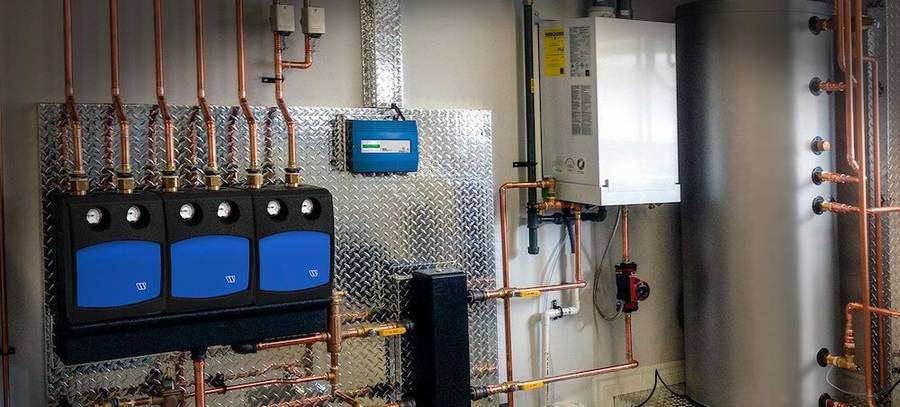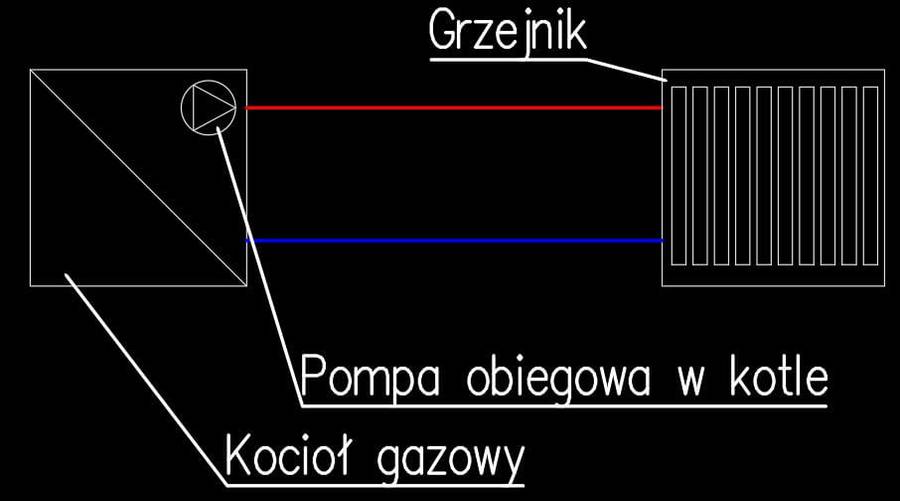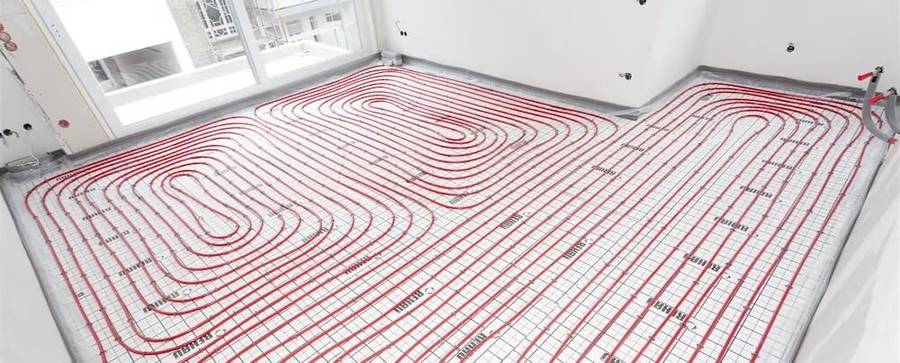Calculating pressure drops and pipe sizing in heating systems
25 października 2022 | Heating
This article is dedicated to installers and other industry professionals who don't have experience with heating system calculations but would like to quickly select appropriate heating pipe sizes using the calculator available on the website.

Flow resistance in heating systems
Water (or other heating medium) in the system must overcome friction resistance related to pipe roughness. These are called linear resistances. Additionally, local resistances occur in installations, for example in:
- elbows
- tees
- valves
- reducers / expansions
- device resistances (e.g. radiators)
Process of calculating heating system pipe sizes
Let's assume the simplest heating system (shown in the diagram below) consisting of:
- heat source (e.g. gas boiler with built-in circulation pump)
- supply and return pipes
- heat receiver (e.g. radiator)
- all valves are intentionally omitted

What needs to be calculated for such a system? We need to determine what the pressure drop (resistance) will be in our system from the heat source to the receiver. We need this to ultimately select an appropriate circulation pump (or check if the one added by the boiler manufacturer will be sufficient). However, first we need to calculate appropriate pipe sizes and thus calculate pressure drops. The calculator will help us with this. Below I present the methodology step by step:
1. Determine required heating power of receivers
In our case, it's one radiator and let's say it's 10kW. This is of course too high for a single standard radiator, but for our case let's make it specially large so the flow won't be too small.
Here's important information. For our calculations, the receiver's power demand is important, not the nominal power of the heat source. Let's look at this case. A single-family house with calculated heat load of 8kW. A 24kW dual-function gas boiler was assumed for the house. Having a boiler with such power doesn't mean we'll produce that much heat for heating purposes. Sizing pipes for 24kW for heating purposes would be overdimensioning, because the house needs 8kW of heating power in the coldest weather, and we size pipes for this power.
2. Assume appropriate temperature difference in the system and calculate flow
The temperature difference between return and supply, together with required heating power affects the flow in the system according to the formula. (Don't be scared by the formula, the calculator will calculate the flow without any problem)
Q = P \ ((Tz - Tp) * cp)
Where: Q - flow [kg/s] - for water it's [dm3/s], P - power [kW], Tz - supply temperature [°C], Tp - return temperature [°C], cp - specific heat - for water 4.2 [kJ/ kg * K]
Temperature difference for radiator heating is assumed at 20° or 15°, for underfloor heating about 7°.
3. Knowing the flow, select pipe sizes
The general rule for selecting pipe sizes is simple. We want to have the smallest possible diameters in the system (because it's cheapest and relatively easiest to install), for which the pressure drop is at an acceptable level. In our calculator, acceptable pressure drops are appropriately recorded, so you don't need to worry about it if you're not a designer and don't have experience.
Formulas for calculating pipe friction coefficient and linear resistances are too complicated and I won't quote them here. Typically, installation designers use calculators or nomograms to determine linear pressure drop in pipes.
We'll solve this point using the calculator. Go to the link and enter 10 as power in kW and temperature difference as 20°. Leave the medium temperature as 80°. You can also change the pipe type to PEX and see that the program suggests 25x2.5 diameter, and that it automatically calculated the flow in [m3/h] and [dm3/s].
Interesting fact - water temperature in the system affects resistance. The colder the water, the greater the linear pressure loss in the pipe.
Example of heating system pipe sizing

A common case for simple calculations is sizing pipes supplying heating medium from the boiler to underfloor heating manifolds. Let's assume we have a 2-story single-family residential building and the required heating power for the ground floor is 3 kW, for the attic 4 kW, total for the house 7 kW. Since this is underfloor heating, let's assume a temperature difference of 7°.
In the program, we'll first calculate what Pex pipe size we should choose for the common pipe, i.e. for 7kW - and it's 32x3.0 and respectively for pipes to individual manifolds: both for 3 kW and 4kW it will be 25x2.5.
Back to articles list